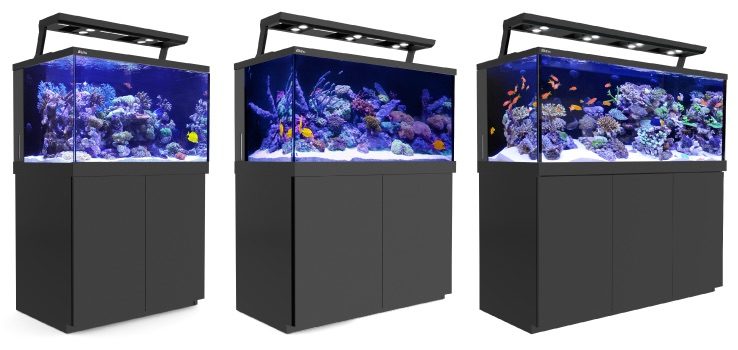Choosing An Aquarium Tank Size
When setting up a saltwater aquarium, choosing the correct tank size is likely to affect your overall success. Before making a purchase, you should carefully consider your budget, which animals you want to keep, and where you will place your new tank.
Likewise, understanding basic water chemistry, its relationship to tank size, and how this affects your aquarium is your second step to success. When you are ready to set up a tank, remember bigger is always better for one reason, water volume.
Tank Size Basics
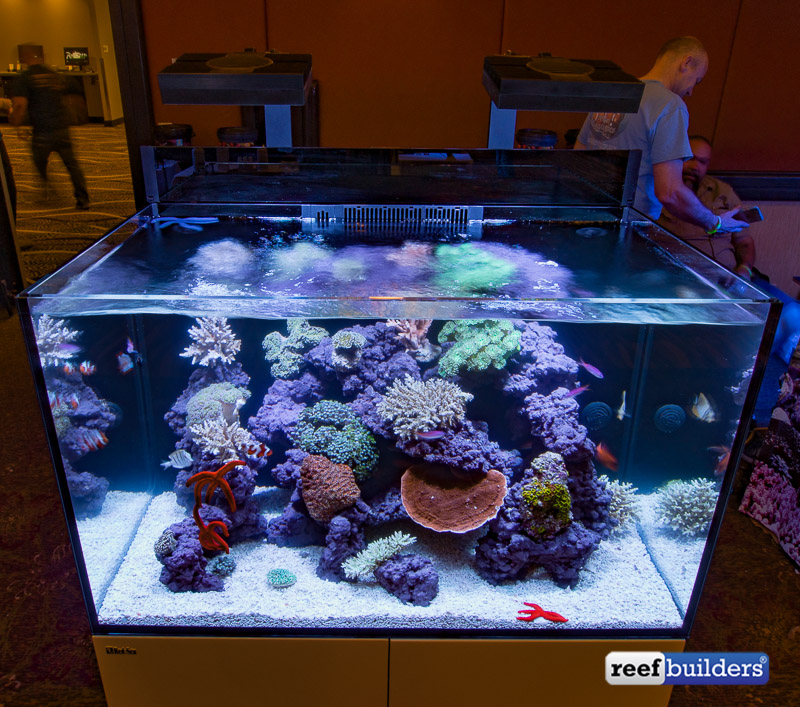
First off, get familiar with different tank shapes and sizes. Aquarium tanks are measured in Gallons or Liters. A 10-30 gallon (38L-113L) aquarium is considered a nano aquarium and you will want to start with something over 30-40 gallon (113L-150L).
If you’re set on a nano, take some extra time to learn water chemistry and get ready for frequent water changes. We find 60 gallons (225L) to be a sweet spot for mid-sized reef tanks.
Aquarium tanks come in a variety of shapes. You can purchase a classic rectangle or find yourself a modern cube, cylinder or drop off. Before setting up your aquarium, it helps to have a vision or idea in mind about what you want it to become.
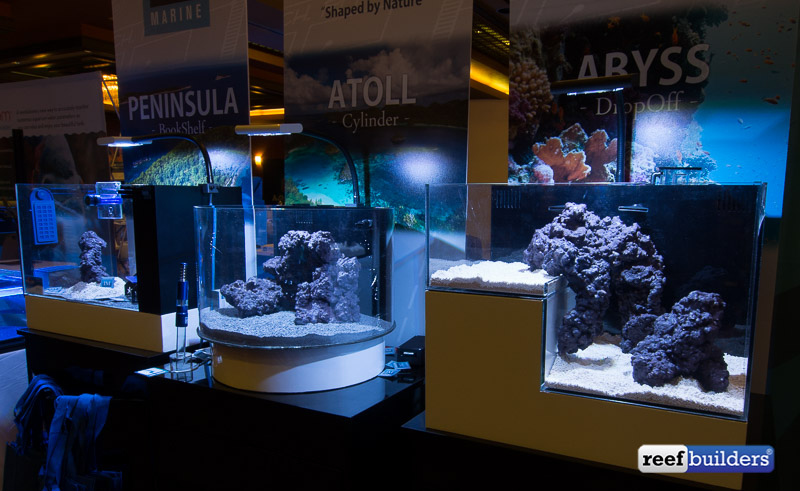
Carefully consider
Budget
Think about your budget. Owning a saltwater aquarium doesn’t have to break the bank. And although larger tanks come with a higher price tag, over time you will appreciate your investment with a higher rate of success.
There are many affordable all-in-one options for new aquarists. Consider how much money you have to spend and how much time you want to invest in this project. After purchasing your aquarium, you will need to continue investing time and money into livestock, food, and maintenance.
Which animals you want to keep
What do you want to keep in your aquarium? Are you captivated by coral and can’t wait to grow a coral reef, or have your heart set on a specific fish. Think about what first caught your eye and what you would most like to see in your aquarium.
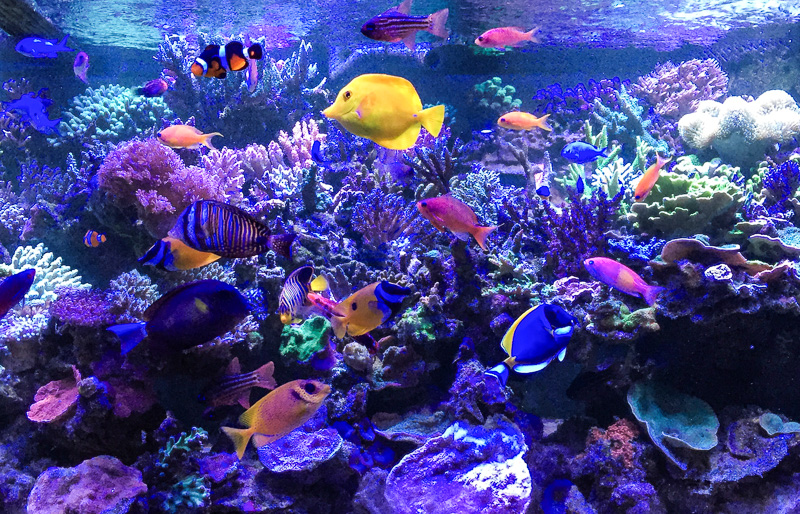
Starting off slow is the name of the game. Choose one or two fish you would like to keep and learn more about, which size of tank they need, and how to properly care for them.
Many large angelfish, surgeonfish, and tangs, need to be kept in large aquarium of 100 gallons or more, and are best suited for experienced aquarists. Make sure your fish are compatible with each other, and that you are buying the right sized tank to keep them healthy.
Where will you keep your aquarium
By now you will have found the ideal spot for your new setup. When you know which size aquarium you will buy, search for the tank dimension online and measure out that space in your room. Make sure the tank, including a tank stand fits!
Understanding water chemistry
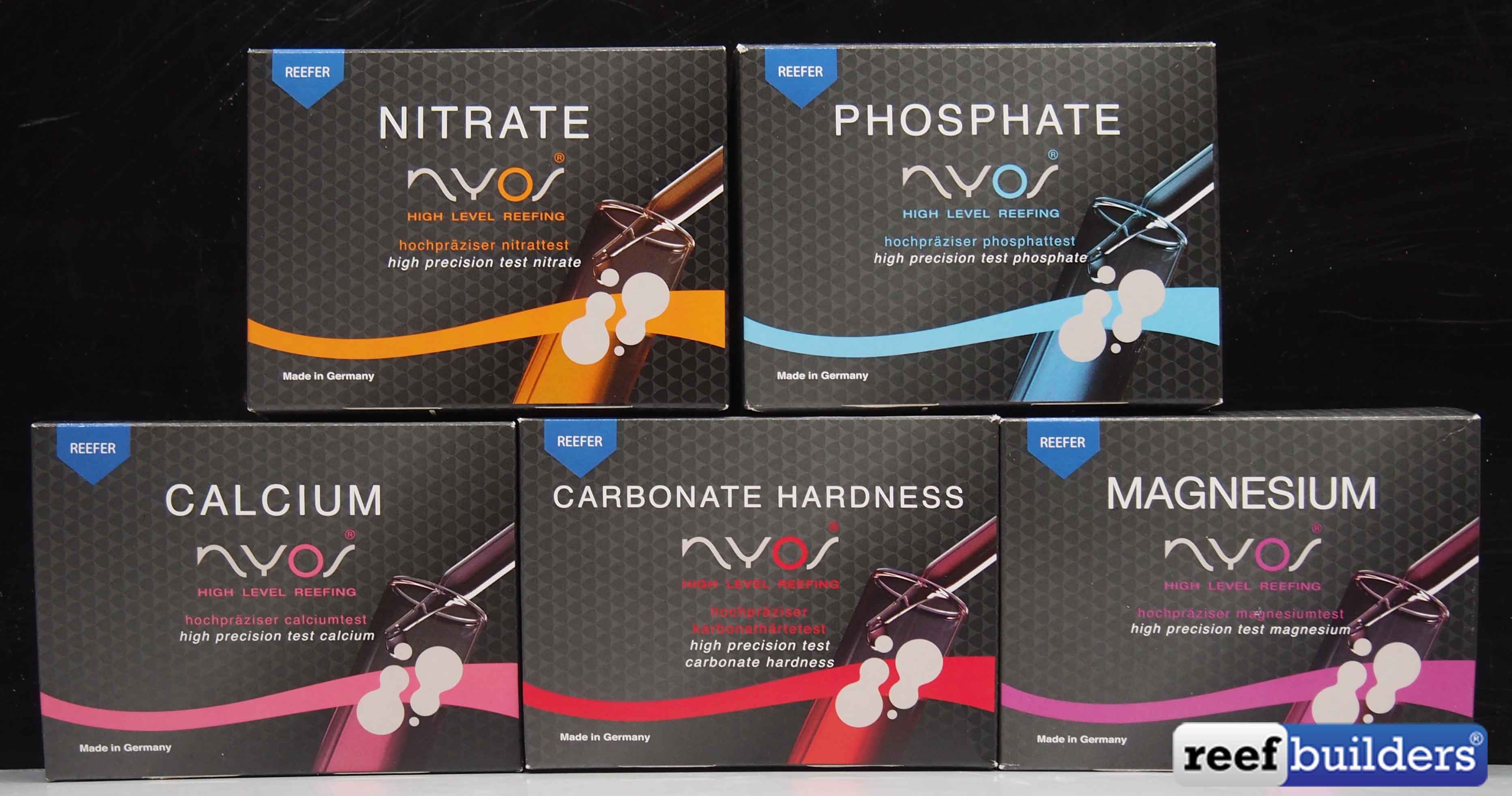
Water chemistry is always changing due to nutrients in the water. Nutrients can build up, or become depleted, and the goal is to maintain stable water chemistry. Imbalances in a smaller aquarium happen much quicker, while bigger tanks with a higher water volume are more forgiving.
Bigger tanks help buffer changes giving you more time to react and reverse the problem. Doing regular water changes is an effective way to keep your water quality in check. Read More about aquarium water testing.
Keep your tank thriving
Before adding fish or corals, let your aquarium run for over a month with saltwater, live rocks and a pump for flow. This process is called cycling and builds up beneficial bacteria in your tank. After you’ve finished this process, start slow when adding fish and coral.
Make sure to keep testing your water quality, especially after feeding. Fish waste is the prime culprit for nutrient buildup. After several months of diligent water testing, regular water changes and making small adjustments, test results should be more consistent.
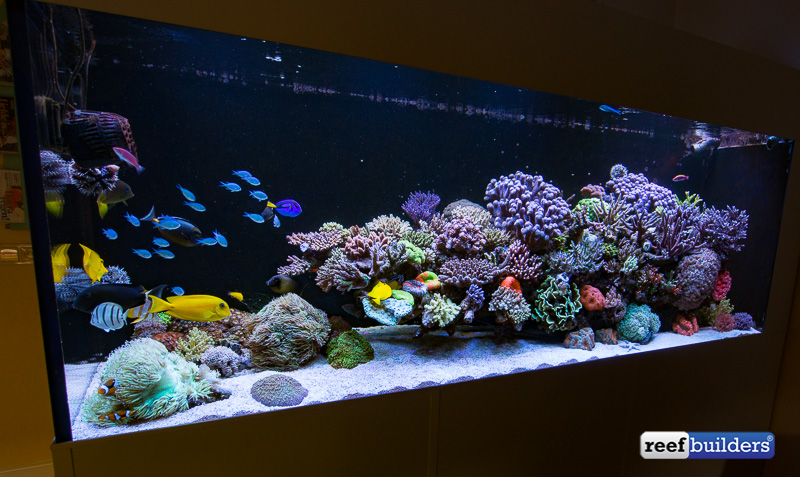
In conclusion, bigger tanks are more forgiving and you will find them easier to keep. Tanks are measured in Gallons or Liters and we recommend starting with the biggest tank you can afford.
Saltwater aquarium tanks can be purchased in All-In-One packages which include a tank, stand and all the equipment you will need to get started. Water chemistry changes happen slower in a bigger tank, improving your overall success.
The Reef Builders guide to setting up a Saltwater Aquarium or Reef Tank. What to know before you buy a Saltwater Aquarium. We will cover more aquarium basics topics in future articles.


